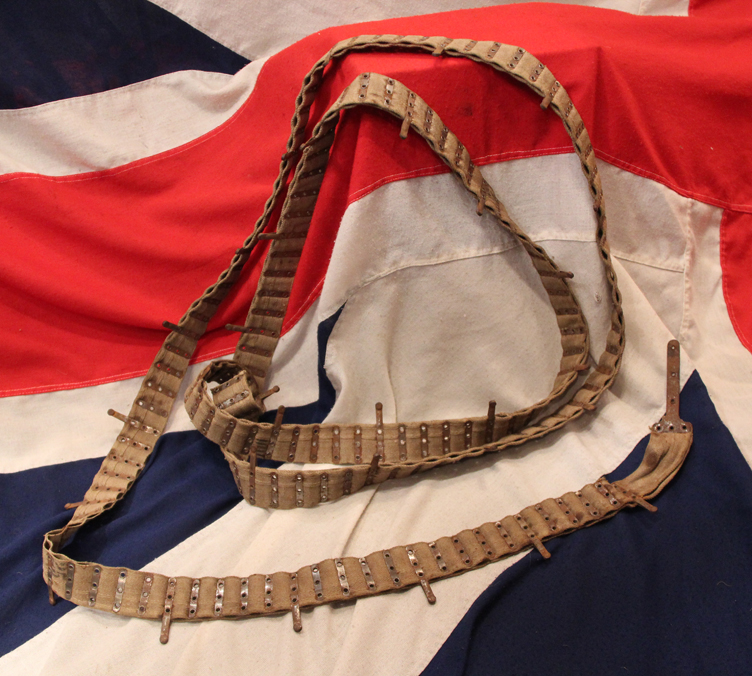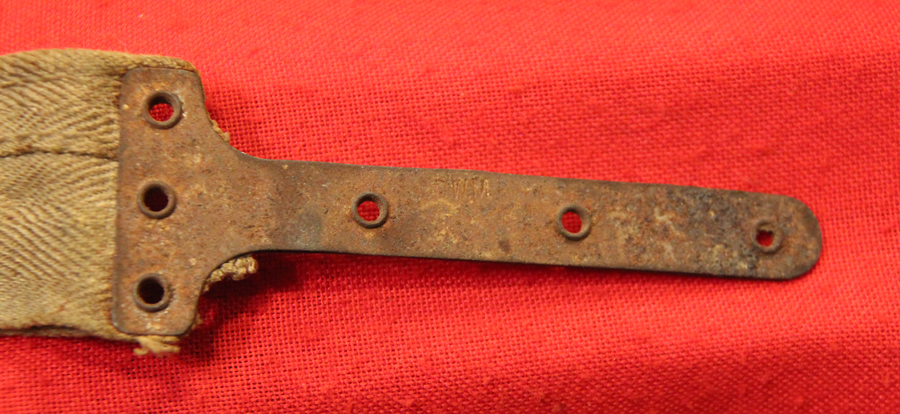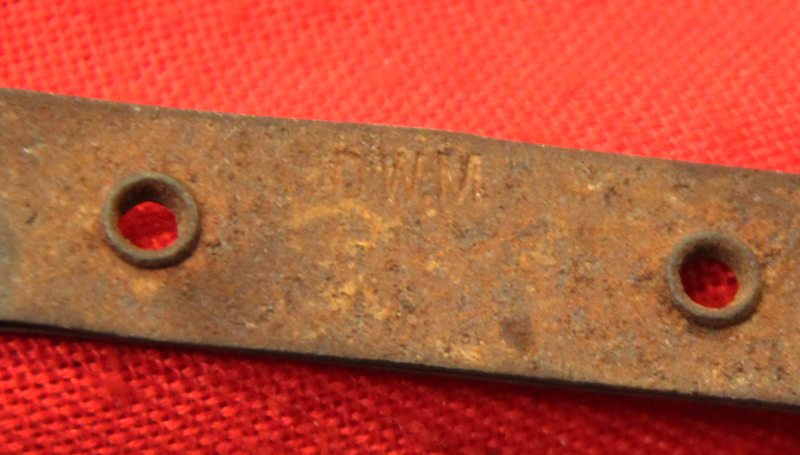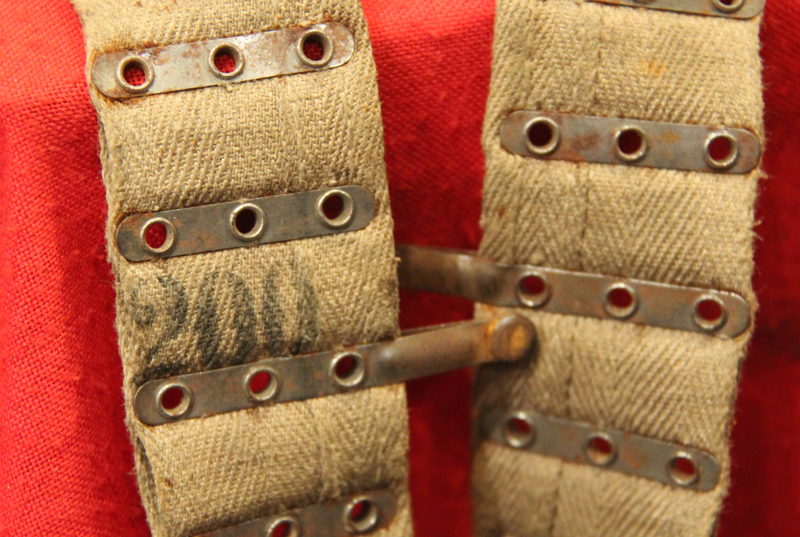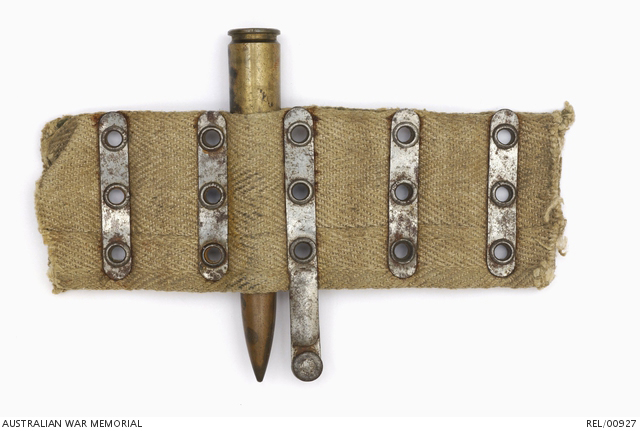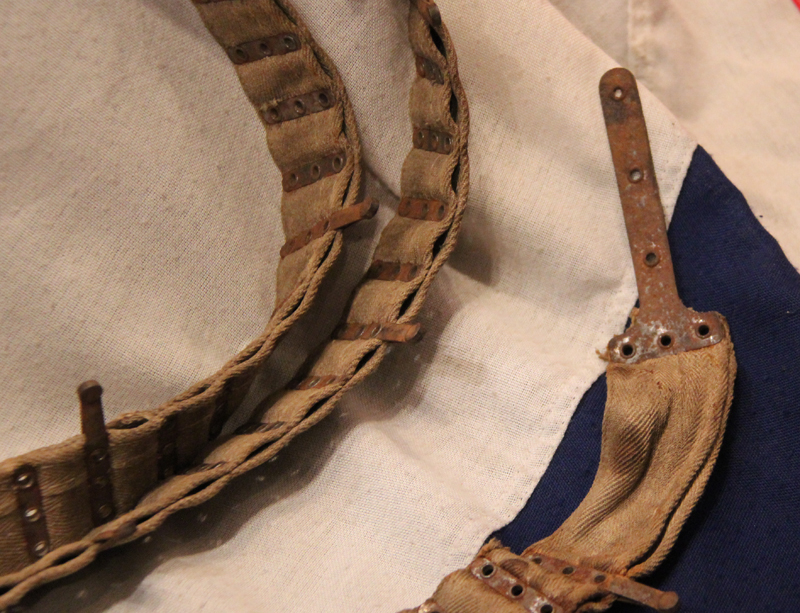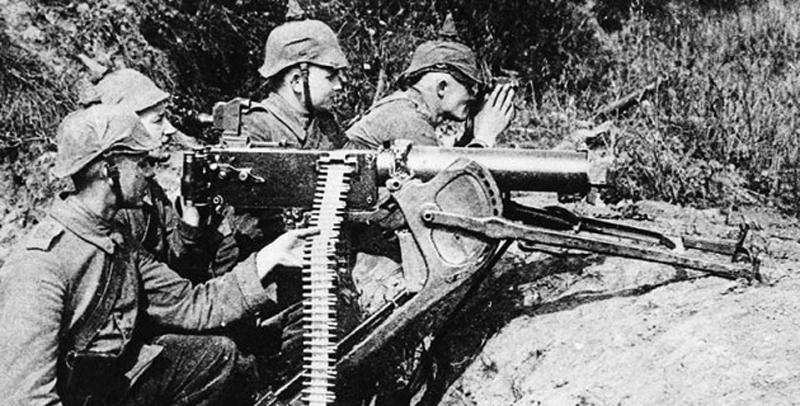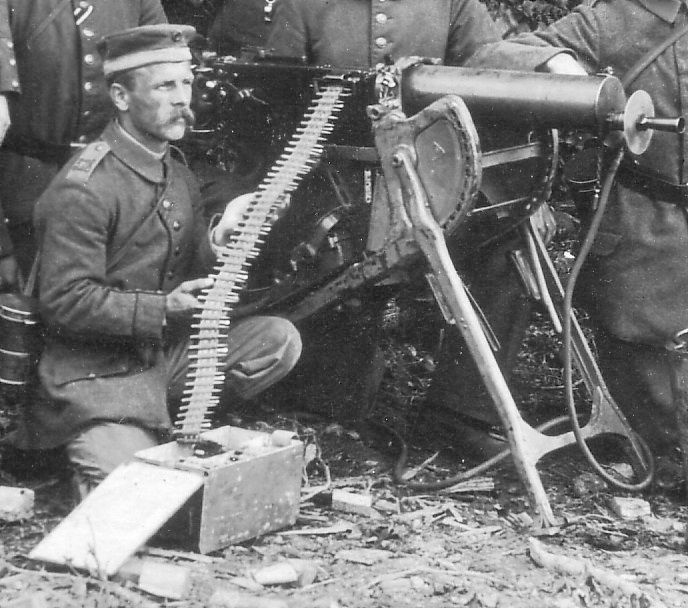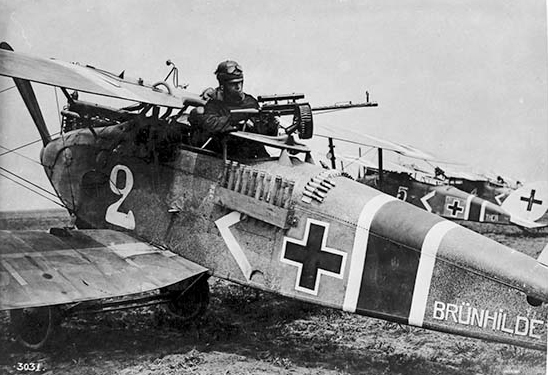Part of a Superb WW1 Trench Warfare Collection, British and German. A Very Rare German Issue DWM Maxim Machine Gun Flyer's Cartridge Belt. From a Crashed German Fighter
Exactly the same type and form that is on display in the Australian War Memorial Museum and taken from a section of German MG08 Machine Gun ammunition belt with bullet reputedly from the aircraft of Baron Manfred von Richthofen. Described on the museum exhibit "A section of German machine gun ammunition belt as used with Maxim MG08 and LMG08 guns and associated development models.
It consists of two layers of khaki cotton webbing, joined with riveted steel dividers forming pockets for the cartridges. This section of belt comprises four such pockets, and is roughly cut off in the middle of the adjoining pocket at either end. The third of the steel dividers (each of which is held in place by three rivets) has a projection at the front, indicating the correct depth to which the bullet should be inserted into the pocket."
History / Summary
Section of cotton webbing ammunition belt once believed to have come from one of the two Luft Maschinen Gewehr (LMG) 08/15s fitted to Baron Manfred von Richthofen's Fokker Dr I aircraft.
The donor, Frank Ronald Rawlinson, enlisted in the AIF in August 1916 and served as 424A 2nd Class Air Mechanic with 3 Squadron, Australian Flying Corps. When Richthofen's body and the remains of his aircraft were brought to the airfield of 3 Sqadron at Bertangles on the evening of 21 April 1918, Rawlinson together with 666 Sergeant Abner Gilchrist Dalzell and 569 Corporal Edward James McCarty assisted with the removal of clothing from the body. Rawlinson obtained a section of the overalls and part of a belt as souvenirs. He also obtained several items from the Fokker Triplane. These were all donated to the Memorial by him in 1960. A letter describing the circumstances is held on File 749/084/005. Apart from confirming the origin of these relics the letter also confirmed that von Richthofen was wearing a parachute and harness when he was shot down over Australian positions near Corbie. However, despite this claim by Frank Rawlinson it is strongly believed the Maxim aircraft ammo belts did not have spacer tabs, and were only 30mm wide. This we are offering is also most rare near complete WW1 German issue DWM Maxim Machine Gun ammunition belt. The DWM belts came in two design forms, and are often confused by description. ThIs the very rare original Imperial German military issue version, and the more common German export Russian version. The German is by far the rarest, the more common Russian has unique features and was imported to Russia around 1906-1910 complying with the official Russian patterns. Both spacers and starter tags are made of brass in the Russian version, the German as is this one, has a steel starter and spacer tags. The assembly of the starter tags fitted at the end of the belt relies on the German pattern with three hollow rivets, as does this one; whereas the Russian version only involves one rivet. The long spacers on the Russian ones are brass and have a hollow rivet assembling the end of the long spacers, this German one has steel spacers and with a solid end rivet. The starter tags are marked with the manufacturer?s initials D.W.M. and are not dated. The cartridge pockets are numbered every 25 rounds, being printed with black ink in the traditional Imperial German font on the fabric the Russian ones are stamped every ten rounds. The style of the figures inked does exactly correspond to that found on contemporary DWM belts issued to the German Army. As a matter of summary, for belts with DWM marked starter tags, the total length of the long spacers, the hollow rivet assembling the end of the long spacers and the numbering of the cartridge pockets every 10 rounds are all key features that enable to tell apart the other German Export /Russian type. It is suspected that the Russian DWM belts might have been part of an export contract to Russia which also involved the delivery of 7.62x54R Model 1891 round-nosed ammunition from Germany around 1906.
Code: 22073
545.00 GBP

